#Schloss Rosenau
Text
Ein Ausflug zum Coburger Glaspreis 2022 - eine Nachlese
Ein Ausflug zum Coburger Glaspreis 2022 – eine Nachlese
Was könnte ich mit einem Sommertag Zeit anstellen? Zum Beispiel, mir einen langgehegten Wunsch erfüllen: nach Coburg fahren um mir die Ausstellung zum Coburger Glaspreis 2022 anzuschauen! Ich ahne, das bedeutet keine Zeit zu verlieren, denn die Wege sind weit. Die Einheimischen und die Eingeweihten wissen das und bekommen mit dem Eintrittsticket – hier oder da – eine vier Wochen-Frist für den…

View On WordPress
#Coburger Glaspreis 2022#Europäisches Museum für Modernes Glas#Glas#Glaskunst#Glaspreis-Präsentation#Handwerk#Kunst#Kunsthandwerk#Moritzkirche#Rödental#Schloss rosenau#Schnuppe von Gwinner#Sommertag#Studioglas#Veste Coburg#Wochenende
0 notes
Text
1903
Letter excerpt from Grand Duchess Maria Alexandrovna to Princess Marie of Romania
Schloss Rosenau, 5 July 1903
Now, about Ducky coming to you. Kyrill is to leave on the 20th and she proposes going also then to you, I am very pleased that she has come to this resolution. I wish only that the following proposal should come from you first: that she should absolutely bring her daughter, which would only be right and natural. She has not seen that poor child since before Easter, that means for two months and alas! I must add, does not seem to miss her a bit. She is always putting off her coming back... This is natural just at this moment, when she is sticking the whole day long with Kyrill, like an engaged couple and the sharp child would be terribly in the way. But when the principle obstacle removes himself and she goes to you, she ought to take her daughter back at last...
This question is a terribly sad one and I have somehow the feeling that at bottom Ducky would be relieved to get quite rid of this child. If she marries Kyrill it will probably end by it, but at present she must stick to her daughter. Oh! how sad it all is, for selfishness plays the principal part in this love affair and drowns all maternal feeling in her...
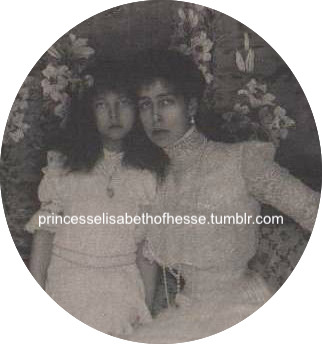
source: My dear Mama by Diana Mandache. The words "absolutely", "ought" and "must" appear underlined in the original letter. 💔
23 notes
·
View notes
Text

The Rock Crystal Egg or Revolving Miniatures Egg is an Imperial Fabergé egg, one in a series of fifty-two jeweled eggs made under the supervision of Peter Carl Fabergé for the Russian Imperial family. It was created in 1896 for Empress Alexandra Fyodorovna. The egg currently resides in the Virginia Museum of Fine Arts.The egg was created by Faberge's workmaster, Mikhail Evlampievich Perkhin (Russian, 1860–1903) with miniatures by Johannes Zehngraf (Danish, 1857–1908)[2] It stands about 248 mm (9 3/4 in) tall on its stand, with a diameter of 98 mm (3 7/8 in.)[3] The outer shell is rock crystal banded with emerald-green enameled gold studded with diamonds. On the apex of the egg is a 27-carat (5.4 g) Siberian emerald supported by an emerald-green enameled gold mount. This cabochon-style emerald is one of the largest gemstones Fabergé used in any of the Imperial eggs.[4] The egg's base sits on a plinth of rock crystal. The base consists of a colorfully enameled gold double spheroid which is circled twice with rose-cut diamonds. It has the monograms of the Tsarina, as the Princess Alix of Hesse-Darmstadt before her marriage, and later as Alexandra Fedorovna, Empress of Russia. Each monogram is surmounted with a diamond crown of the respective royal house.[4] These monograms form a continuous pattern around the base of the egg.Inside the rock crystal egg is a gold support holding twelve miniature paintings. The paintings are of the various palaces and residences that were significant to the Empress. Each location holds a special memory for Nicholas and Alexandra in the early days of their courtship, as they had just been married two years prior, in 1894.
When the large cabochon emerald on the apex is depressed it engages a mechanism that rotates the miniatures inside the egg. A hook moves down and folds the framed pictures back, like the pages of a book, so two paintings can be fully seen at one time.[1] Each miniature is framed in gold with an emerald on the apex. The frames are attached to a central fluted gold shaft which passes vertically through the egg.[4]
The locations include:
The Neues Palais, Darmstadt, Germany: Palace where the Empress was born.
Kranichstein, Hesse: A favorite summer residence of the Empress' youth.
Balmoral Castle, Scotland: Childhood holiday destination of Alexandra's grandmother, Queen Victoria.
Old Grand Ducal Palace (Altes Palais), Darmstadt: Official seat of Alexandra's father, Ludwig IV, Grand Duke of Hesse.
Wolfsgarten, Hesse: Hunting lodge Alexandra's family visited as a child.
Windsor Castle, near London, England: A residence of Queen Victoria where Alexandra visited as a child.
Palace Church, Coburg: Site where Alexandra first consented to marry Nicholas.
Schloss Rosenau, Coburg: A site Nicholas and Alexandra visited the day after their engagement.
Osborne House, Isle of Wight: Site of Nicholas' visit to see Alexandra while they were engaged.
The Winter Palace, St. Petersburg: The site of Nicholas and Alexandra's wedding.
Anichkov Palace, St. Petersburg: Residence of Maria Feodorovna, where Alexandra spent her first year in Russia.
The Alexander Palace, Tsarskoe Selo, near St. Petersburg: the Imperial family's favorite winter residence.The egg was presented by Nicholas II to Alexandra Fedorovna on March 24, 1896. She received it at Eastertide in the same year that the young couple had suddenly ascended the throne.[1]
In 1909 the egg was housed in the Empress' study in the Winter Palace. The egg was seized by the Kerensky Provisional Government and moved to the Armory Palace of the Kremlin in Moscow along with approximately 40 other eggs. In 1930, the Rock Crystal Egg was one of the ten Eggs sold by the Antikvariat (Trade Department) to the Hammer Galleries in New York for 8000 rubles, or approximately $4000 U.S. In 1945 the egg became the last of five Imperial Easter Eggs bought by Lillian Thomas Pratt, the wife of a General Motors executive John Lee Pratt. Upon Lillian Thomas Pratt's death in 1947, the egg was willed to Virginia Museum of Fine Arts, Richmond, Virginia. It remains on view as part of the Virginia Museum of Fine Art's European Decorative Art collection
6 notes
·
View notes
Text
Erleben Sie die historische Stadt Coburg
Coburg ist eine historische Stadt in Bayern, die voller Sehenswürdigkeiten steckt. Von eindrucksvollen Schlössern und Kirchen bis hin zu atemberaubenden Gärten und Parks ist für jeden etwas dabei. In diesem ultimativen Guide werden wir die besten Sehenswürdigkeiten in Coburg vorstellen und erklären, was Sie erwarten können.
Coburger Schloss
Das Coburger Schloss ist eine der bekanntesten Sehenswürdigkeiten der Stadt. Es ist ein mittelalterliches Schloss, das im 13. Jahrhundert erbaut wurde. Es wurde im Laufe der Jahrhunderte mehrmals erweitert und ist heute ein eindrucksvolles Gebäude. Heute beherbergt es das Staatliche Museum für Kunst und Kulturgeschichte und bietet Besuchern einen Einblick in die Geschichte der Region.
Veste Coburg
Die Veste Coburg ist eine weitere historische Sehenswürdigkeit, die man sich nicht entgehen lassen sollte. Es ist eine mittelalterliche Burg, die im 13. Jahrhundert erbaut wurde und auf einem Hügel über der Stadt thront. Es ist ein wichtiges Symbol für Coburg und ein beliebtes Ziel für Touristen. Es beherbergt auch ein Museum, in dem man mehr über die Geschichte der Stadt erfahren kann.
St. Moriz Kirche
Die St. Moriz Kirche ist eine weitere Sehenswürdigkeit in Coburg. Es ist eine katholische Kirche, die im 15. Jahrhundert erbaut wurde. Sie ist ein wichtiges religiöses und historisches Symbol der Stadt und bietet Besuchern einen schönen Blick auf die umliegende Landschaft.
Ehrenburg
Ehrenburg ist ein weiteres historisches Gebäude in Coburg. Es wurde im 16. Jahrhundert erbaut und ist ein wichtiges Symbol für die Stadt. Es beherbergt ein Museum, in dem man mehr über die Geschichte der Stadt erfahren kann.
Schloss Rosenau
Schloss Rosenau ist ein weiteres mittelalterliches Schloss in Coburg. Es wurde im 15. Jahrhundert erbaut und ist ein wichtiges Symbol für die Stadt. Heute beherbergt es ein Museum, in dem man mehr über die Geschichte der Stadt erfahren kann.
Stadtpfarrkirche St. Augustin
Die Stadtpfarrkirche St. Augustin ist eine weitere Sehenswürdigkeit in Coburg. Es ist eine barocke Kirche, die im 17. Jahrhundert erbaut wurde. Sie ist ein wichtiges religiöses und historisches Symbol der Stadt und bietet Besuchern einen schönen Blick auf die umliegende Landschaft.
Landestheater Coburg
Das Landestheater Coburg ist ein weiteres Highlight in Coburg. Es ist ein Theater, das im 19. Jahrhundert erbaut wurde und ein beliebtes Ziel für Touristen ist. Es bietet eine Vielzahl von Aufführungen, von klassischen Stücken bis hin zu modernen Musicals.
Veste Heldburg
Die Veste Heldburg ist eine weitere mittelalterliche Burg in Coburg. Es wurde im 16. Jahrhundert erbaut und ist ein wichtiges Symbol für die Stadt. Heute beherbergt es ein Museum, in dem man mehr über die Geschichte der Stadt erfahren kann.
Coburger Gärten
Coburg hat auch einige schöne Gärten und Parks, die man sich nicht entgehen lassen sollte. Der Coburger Garten ist ein großer Park, der im 19. Jahrhundert angelegt wurde und heute ein beliebtes Ziel für Touristen ist. Es beherbergt auch einige historische Denkmäler und Gebäude, die man sich nicht entgehen lassen sollte.
Fazit
Coburg ist eine wunderschöne und historische Stadt, die voller Sehenswürdigkeiten steckt. Von eindrucksvollen Schlössern und Kirchen bis hin zu atemberaubenden Gärten und Parks ist für jeden etwas dabei. In diesem ultimativen Guide haben wir die besten Sehenswürdigkeiten in Coburg vorgestellt und erklärt, was Sie erwarten können. Wenn Sie die Stadt besuchen, sollten Sie sich auf jeden Fall die Zeit nehmen, um einige dieser Sehenswürdigkeiten zu besuchen.
0 notes
Photo
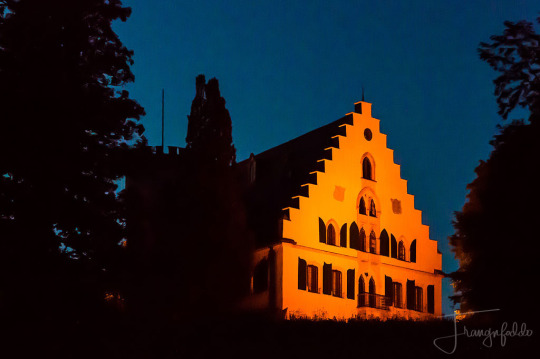
Schloss Rosenau im Landkreis Coburg zur blauen Stunde.
3 notes
·
View notes
Photo
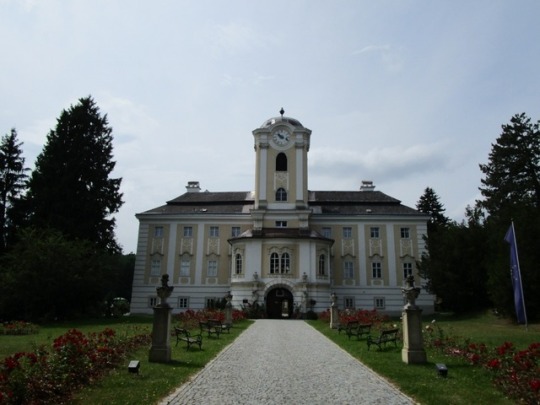
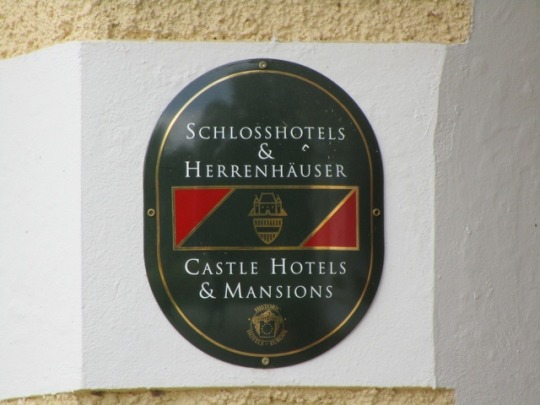
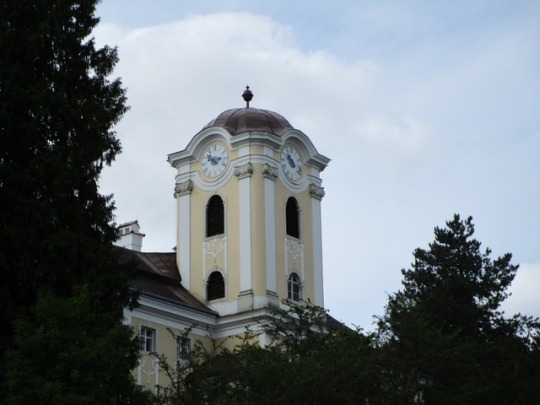
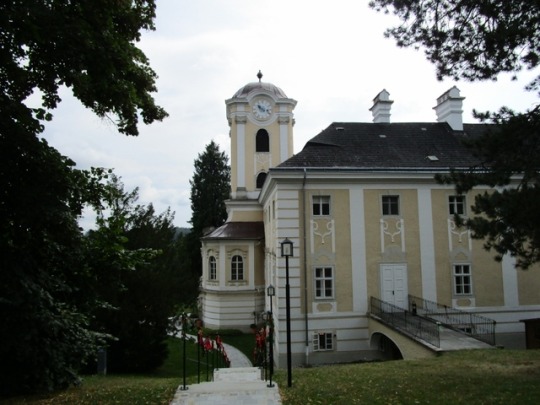
Rosenau Castle. A castle with a newly rediscovered Masonic lodge and the Baroque ensemble of a lovely country estate. Rosenau Castle is situated 9 km west of Zwettl in Lower Austria and accommodates the Austrian Museum of Freemasonry, the only such museum in the world to be housed in an original 18th century Masonic lodge. Guests in the four-star superior Rosenau Castle Hotel can enjoy exclusive days of culture, culinary delights and relaxation in an atmosphere of classic charm.
Schloss Rosenau. Ein Schloss mit einer wiederentdeckten Freimaurerloge und ein barockes Gutshofensemble. Schloss Rosenau liegt 9 Kilometer westlich von Zwettl in Niederösterreich und beherbergt das weltweit einzige Freimaurermuseum, das in einer Originalloge des 18. Jahrhunderts untergebracht ist. Gäste im 4 Sterne Superior Schlosshotel Rosenau erwarten exquisite Tage voller Kultur, kulinarischen Genüssen und Entspannung in einer Atmosphäre mit klassischem Charme.
#Rosenau#Schloss Rosenau#castle#château#Masonic lodge#freemasons#Baroque#manor#Freimaurerloge#Freimaurer#Barock#Gutshofensemble#Zwettl#Waldviertel#Niederösterreich#Lower Austria#Österreich#Austria#Schlosshotel#castle hotel#freemasonry#museum#Freimaurermuseum
12 notes
·
View notes
Text
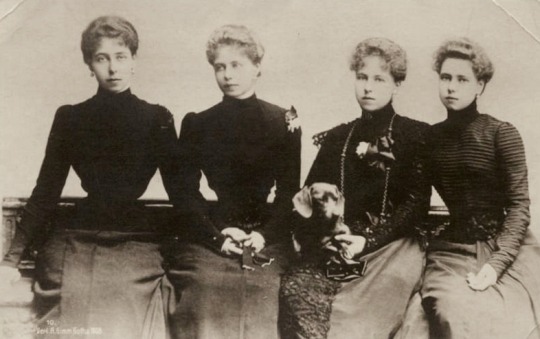

The Edinburgh Princesses mourning the death of their father Alfred, Duke of Saxe-Coburg and Gotha in 1900.
Alfred's last year of life was overshadowed by the sudden death of his only son and heir to the throne, Hereditary Prince Alfred, who attempted suicide during the celebrations for the silver wedding anniversary of the ducal couple in 1899 and died two weeks later. Alfred blamed his wife and officially separated from her. To numb his pain, he began to drink.
Duke Alfred died on July 1900 , shortly before his 56th birthday, of throat cancer at his summer residence at Schloss Rosenau and was buried next to his son in the ducal mausoleum in Coburg.
#queen marie of romania#crown princess marie of romania#grand duchess victoria melita of hesse-darmstadt#hereditary princess alexandra of hohenlohe-langenburg#princess beatrice of saxe-coburg and gotha#mourning#saxe-coburg and gotha#german royal#german royalty#1900#1900s
56 notes
·
View notes
Text
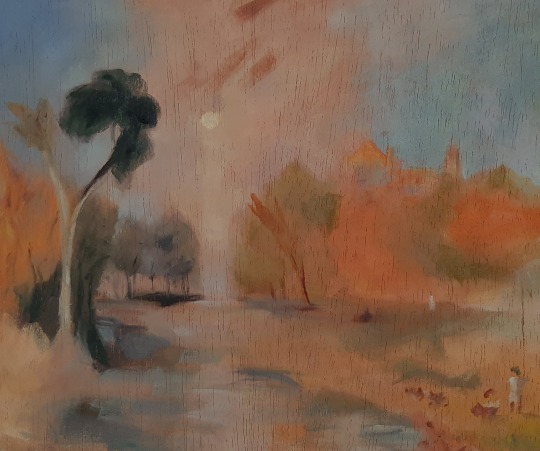
Master study of Schloss Rosenau, Coburg (1841-1844) by William Turner
9 notes
·
View notes
Photo

#ThrowbackThursday from the JMM Collections: Brass charm bracelet presented to Bert Gomprecht by Sewing Group. Sixteen small grommets are on bracelet, brass and silver alternating, with a name printed on each grommet.
A larger, solid charm in the middle of the bracelet has "Presented to Bert Gomprecht by Sewing Group February 25, 1939" printed on it. "Eutaw Place Temple" printed on back of large charm. 4 names on each grommet.
Names include: C. Kelner, H. Klotzman, L. Tiedenbrun, C. Rau, J. Rosenberg, B. Ross, M. Stummer, M. Schloss, R. Block, T. Benesch, S. Cohn, S.E. Kohn, M. Greenebaum, P. Hess, S. Van Hassel, M. Hopkins, C. Fisher, D. Rothholz, C. Summerfield, R. Manko, L. Bertuch, R. Bergen, B. Davis, B. Eichberg, S. Goldstein, N. Newman, S. Ottenheimer, T. Lindau, A. Gaynor, L. Greenwald, S. Golden, P. Goldbloom, R. Fareman, T. Feldman, J. Kaufman, I. Lansburg, M. Koch, H. Fuld, D. Goldstrum, H. Sonneborn, J. Taft, E. Shuman, F. Blum, B. Blum, M. Adler, Z. Agular, B. Ottenheimer, Z. Weis, E. Ottenheimer, C. Waldorf, M. Rosenau, and J. Weil.
Temple Oheb Shalom Collection, JMM 2004.97.60.
6 notes
·
View notes
Text
ALFRED
Duke of Saxe-Coburg and Gotha
(born 1844 - died 1900)
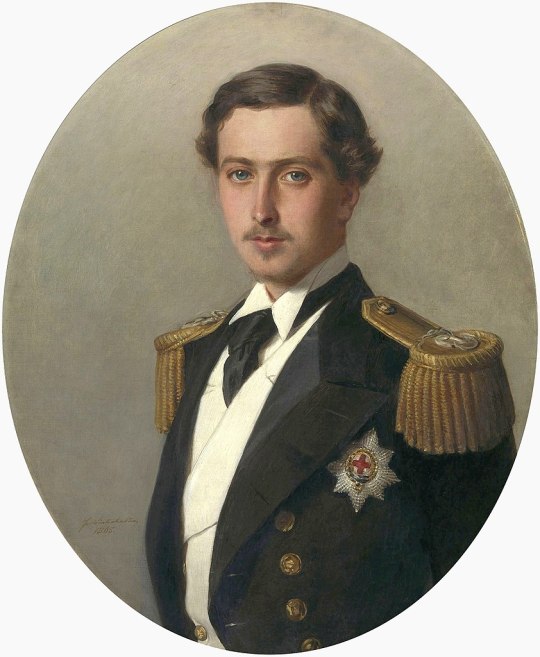
pictured above is a portrait of the Prince of the United Kingdom, by Franz Xaver Winterhalter from 1865
-------------------- ~ -------------------- ~ --------------------
SERIES - On this day July Edition: Alfred died on 30 July 1900.
-------------------- ~ -------------------- ~ --------------------
ALFRED ERNEST ALBERT was born in 1844, at Windsor Castle. He was the second son of Prince Albert of Saxe-Coburg and Gotha and Victoria, Queen of the United Kingdom, and thus he was a member of the British brach of the HOUSE OF SAXE-COBURG AND GOTHA.
From birth he was a PRINCE OF THE UNITED KINGDOM and for almost 20 years he was the second-in-line to the British throne, passing to third in the line of succession after the birth of his nephew Prince Albert Victor of Wales in 1864.
By 1866 his mother created him DUKE OF EDINBURGH, EARL OF ULSTER and EARL OF KENT.
In 1874 he married MARIYA, a Grand Duchess of Russia, the only daughter of Alyeksandr II, Emperor of all the Russias and Mariya Alyeksandrovna. They had six children (check the list on the post about his Royal Wedding).
Having served in the Royal Navy since a young age he traveled and lived throughout the British Empire and achieved the rank of ADMIRAL OF THE FLEET in 1893.
That same year his uncle Ernst II, Duke of Saxe-Coburg and Gotha died and he succeeded as DUKE OF SAXE-COBURG AND GOTHA, because his father was already dead and his older brother Albert Edward, Prince of Wales had renounced his rights of succession in 1863.
His only surviving son Alfred, Hereditary Prince of Saxe-Coburg and Gotha died in 1899, aged 24.
Over a year later, the Duke of Saxe-Coburg and Gotha also died of throat cancer aged 55, on 30 July 1900 at Schloss Rosenau in the Duchy of Saxe-Coburg and Gotha.
-------------------- ~ -------------------- ~ --------------------
As he did not have any other sons his British titles reverted to the Crown. And in the Duchy of Saxe-Coburg and Gotha he was succeeded by his nephew Charles Edward, Duke of Albany, who during World War I was excluded from the British line of succession to do his German connections.
-------------------- ~ -------------------- ~ --------------------
Check my posts on ALFRED's wife and their Royal Wedding!
His wife was Mariya Alyeksandrovna, a Grand Duchess of Russia from her birth in 1853.
He married her in 1874.
#prince alfred#duke of edinburgh#duke of saxe coburg and gotha#british prince#saxe coburg and gotha#house of saxe coburg and gotha#british royals#british royalty#german royals#german royalty#royals#royalty#monarchy#monarchies#royal history#british history#german history#european history#world history#history#history lover#19th century#victorian royals#queen victoria#prince albert#tsar alexander ii#history with laura
6 notes
·
View notes
Photo

On This Day In History . 26 August 1819 . Prince Albert was born . . Albert was born at Schloss Rosenau, near Coburg, Germany, the second son of Ernest III, Duke of Saxe-Coburg-Saalfeld, & his first wife, Louise of Saxe-Gotha-Altenburg. . ◼ Prince Albert of Saxe-Coburg and Gotha (Full name: Francis Albert Augustus Charles Emmanuel; later The Prince Consort; was the husband of Queen Victoria. . ◼ He was born in the Saxon duchy of Saxe-Coburg-Saalfeld to a family connected to many of Europe's ruling monarchs. . ◼ At the age of 20 he married his first cousin, Queen Victoria, with whom he would ultimately have nine children. . ◼ At first, Albert felt constrained by his position as consort, which did not confer any power or duties upon him. Over time he adopted many public causes, such as educational reform & a worldwide abolition of slavery, & took on the responsibilities of running the Queen's household, estates & office. . ◼ He was heavily involved with the organisation of the Great Exhibition of 1851. Albert aided in the development of Britain's constitutional monarchy by persuading his wife to show less partisanship in her dealings with Parliament. . ◼ He died at the early age of 42 on 14 December 1861, plunging the Queen into a deep mourning that lasted for the rest of her life. Upon Queen Victoria's death in 1901, their eldest son, Edward VII, succeeded as the first British monarch of the House of Saxe-Coburg and Gotha, named after the ducal house to which Albert belonged. . . . #OnThisDayInHistory #ThisDayInHistory #TheYear1819 #PrinceAlbert #PrinceConsort #RoyalFamily #Royals #Royal #HouseofSaxeCoburgandGotha #Royalty #Monarchy #History #RoyaltyinArt #BritishMonarchy #D26Aug #QueenVictoria #RoyalHistory #Instahistory #Coburg #Germany #deutschland #OnThisDay #historyfacts #buckinghampalace (at Coburg, Germany) https://www.instagram.com/p/B1oXzo9AOmK/?igshid=zmariro1gks5
#onthisdayinhistory#thisdayinhistory#theyear1819#princealbert#princeconsort#royalfamily#royals#royal#houseofsaxecoburgandgotha#royalty#monarchy#history#royaltyinart#britishmonarchy#d26aug#queenvictoria#royalhistory#instahistory#coburg#germany#deutschland#onthisday#historyfacts#buckinghampalace
6 notes
·
View notes
Photo
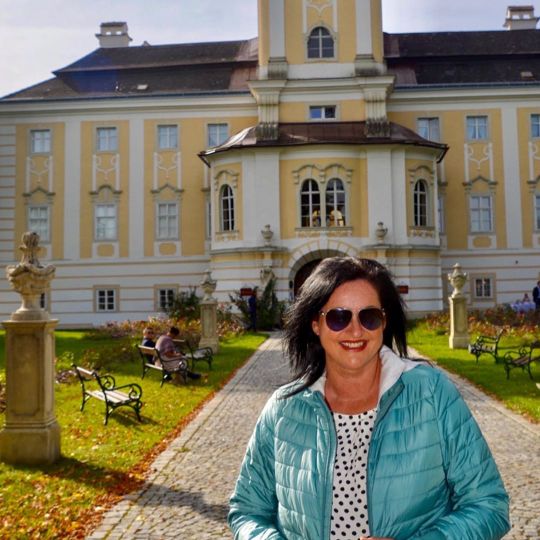
❤️Schloß Rosenau im Waldviertel ❤️ Das Freimaurer👌Museum immer einen Besuch wert! Hier könnt ihr euch mehr dazu ansehen: . . https://www.private-taste.at/post/hirsch . . #empfehlung #ausflugtipp #privatetastebyanitamoser #privatetasteontour #privatetastebyanita #schlossrosenau (hier: Schloss Rosenau, Niederösterreich, Austria) https://www.instagram.com/p/CFU4CHQj-a6/?igshid=19k2vk2a6wl3i
#empfehlung#ausflugtipp#privatetastebyanitamoser#privatetasteontour#privatetastebyanita#schlossrosenau
0 notes
Photo
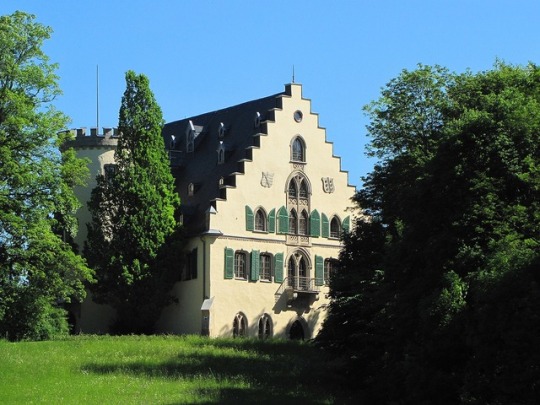
Royal hideaway: Schloss Rosenau is a former castle, converted into a ducal country house, between the towns of Coburg and Rödental, formerly in Saxe-Coburg, now Bavaria, Southern Germany. Schloss Rosenau is perhaps most notable as the birthplace and boyhood home of Prince Albert of Saxe-Coburg-Gotha, who in 1840 became the consort of Queen Victoria of the United Kingdom of Great Britain & Ireland. It should not be confused with another house of the same name in the Waldviertel of Austria. Today, the Rosenau is in the care of the Bavarian Administration of State Palaces, Gardens & Lakes. Since 1990, the house and its landscape park have been open to the public and can be visited.
#coburg#roedental#castles#museums#german royals#bayern#bavaria#southern germany#prince albert#sachsen coburg gotha#european neighbors#brits#rosenau#1800s#history#aristocracy
68 notes
·
View notes
Photo
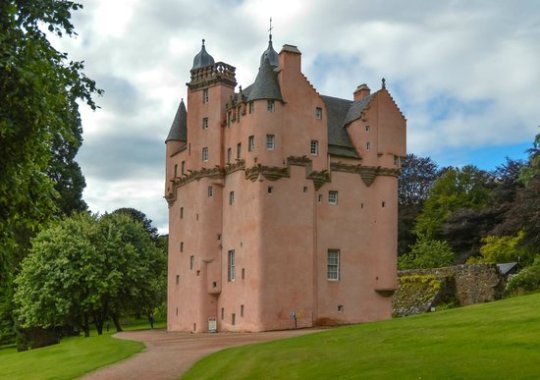

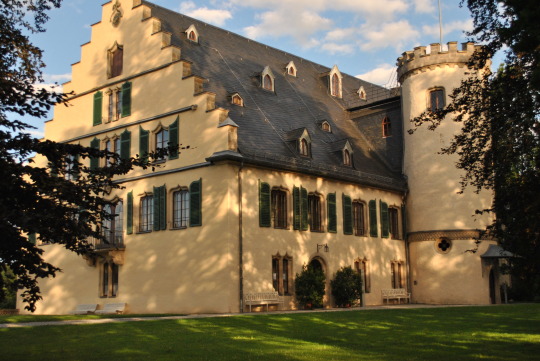

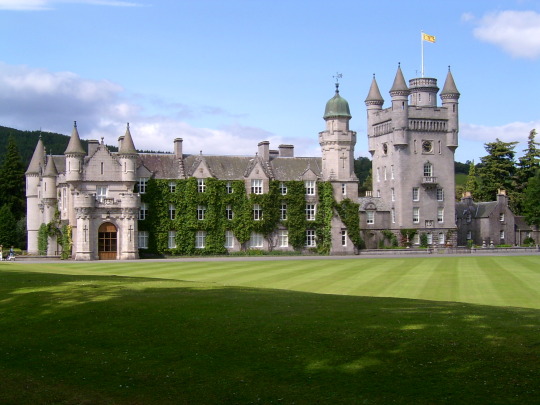
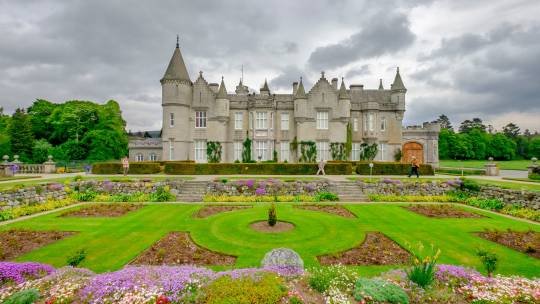


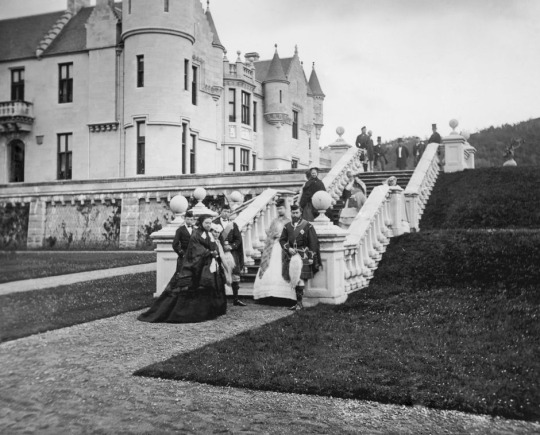

Balmoral Castle is built from granite quarried at Invergelder on the estate. It consists of two main square blocks, each arranged around a courtyard. The southwestern block contains the official rooms and the royal bedrooms, while the northeastern wing contains the kitchen, utility rooms, storage rooms, ancillary rooms and the staff rooms. Connecting the two main wings is an 80-foot (24 m) tall clock tower, modelled after the tower at Craigievar Castle. (first photo) It is topped with turrets, one of which has a balustrade similar to a feature at Castle Fraser. (second photo)
Prince Albert himself put the first sketches for the building on paper. He preferred the Scottish Baronial style with neo-Gothic elements, which were borrowed from German rather than English models. Several features from the Old Balmoral were also used in the design. Prince Albert was particularly interested in facade details such as the towers and the design of the windows. Features such as stepped gables were used that reminded Albert and the Queen of Schloss Rosenau, (third photo) the birthplace of Albert, and the Veste Coburg. In total, Balmoral Palace comprises over 70 rooms.
The purchase of a Scottish estate by Victoria and Albert and their adoption of a Scottish architectural style, was influential for the ongoing revival of Highland culture. They decorated Balmoral with tartans and attended highland games at Braemar. Queen Victoria expressed an affinity for Scotland, even professing herself to be a Jacobite. Added to the work of Sir Walter Scott, this became a major factor in promoting the adoption of Highland culture by Lowland Scots. Historian Michael Lynch comments that "the Scottishness of Balmoral helped to give the monarchy a truly British dimension for the first time".
https://www.youtube.com/watch?v=VMz7MO95IcI
https://www.balmoralcastle.com/squirrel.htm
https://www.balmoralcastle.com/about.htm
1 note
·
View note
Photo
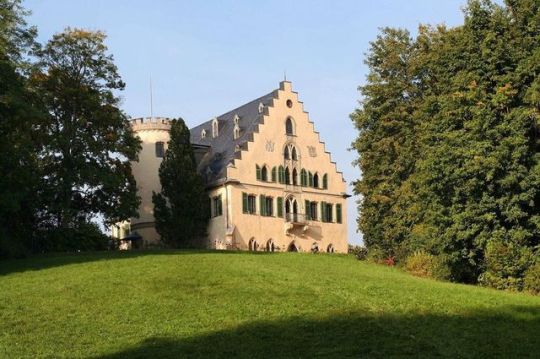
„Wer zuerst kommt, mahlt zuerst.“ #Sprichwörter #Glück #Resilienz #Größe #Erfolgreich #Weisheit #Wissen #Mut #Verwandlung #Zukunft #Freiheit #Vorwärts #AjToussaint Schloss Rosenau © Störfix https://www.instagram.com/p/B3HLIY-neTs/?igshid=16ma8n4asjbcv
#sprichwörter#glück#resilienz#größe#erfolgreich#weisheit#wissen#mut#verwandlung#zukunft#freiheit#vorwärts#ajtoussaint
0 notes
Photo
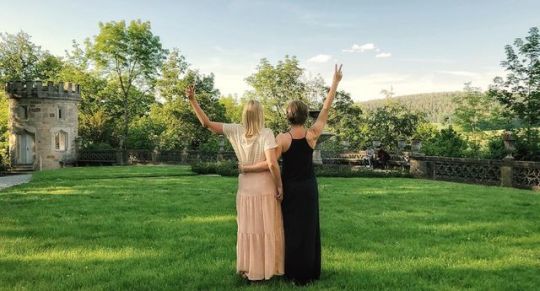
Stay close to people, who feel like sunshine. ☀️ . . @cakepop.guru 💕 . . #friendshipgoals #friends #bestie #summer #green #nature #photography #peoplephotography #girls #loved #grateful #staypositive #inspo #inspiration #me #goodvibes #lifeisgood #dress #mode #glücklich #loveit (hier: Schloss Rosenau, Coburg) https://www.instagram.com/p/ByQq4nFI3LF/?igshid=w3phsgpr2gpk
#friendshipgoals#friends#bestie#summer#green#nature#photography#peoplephotography#girls#loved#grateful#staypositive#inspo#inspiration#me#goodvibes#lifeisgood#dress#mode#glücklich#loveit
0 notes